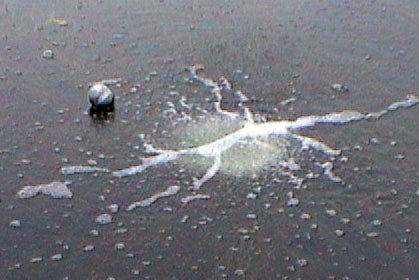
MixAir FAQ
What makes a MixAirTech diffuser work so efficiently?
The MixAir design allows for the unrestricted low head loss delivery of air evenly over the surface of the continuous membrane. Once the air overcomes the surface tension of the effluent and membrane, numerous small bubbles are emitted uniformly over the entire surface of the membrane. They then rise slowly to the surface. These small bubbles:
- Rise more slowly than larger bubbles
- Create increased interface over larger bubbles
- Have greater cumulative surface area
- Channeled correctly by design, effect a larger than larger bubbles volume and larger surface area than larger
- Are emitted over the entire membrane bubbles
- Coalesce less than larger bubbles
- Entrain (mix) more liquid than larger bubbles
This natural phenomenon along with the fact that the flagship MixAir diffuser has 10 times the surface area and 14 times the linear lift area of conventional devices assures superior performance. All of this explains why MixAir diffusers have better certified test results than other diffusers on the market. Another noteworthy MixAir design trait that cannot be measured, is the effect of continuous turnover. There are no accepted certified tests currently available from the mixing or aeration industries that measure this added benefit.
Successful water treatment is dependent on continuous turnover. There is additional air uptake from the surface of a body of water that is not taken into account. Common sense dictates that MixAir’s diffuser efficiency is substantially greater than its certified ASCE test results (ASCE recognized testing does not measure the effects of surface absorption). This phenomenon is due to our design, which causes rapid continuous turnover. This helps eliminate stratification by bringing bottom water to the surface and aggressively promotes increased air absorption from an active agitated surface. In unrestricted clean water it is estimated that these diffusers move over 50,000 GPH per SCFM between 2-10 SCFM.
What exactly is the MixAirTech System? - It is a clean, oil-less air blower system that furnishes volumes of air (SCFM) to a membrane diffuser.
What is the mechanism by which the product performs? - Non-contaminated (oil-less) air is run through MixAir’s micro-porous diffuser membrane. This diffuser provides increased surface area and linear lift unlike most diffusers. This causes an increase in the number of bubbles and the flow pattern caused by them. It also enhances the natural efficiency of oxygen transfer and turnover (inversion). There are other outside factors that effect performance: toxicity, temperature, depth, contaminate type and level, hold time and surface area.
Why is it important to use clean, oil-less air?
Air or gas that contains dirt, dust or oil will foul the transport system as well as clog the diffuser over a period of time. Also the oil-less air should not further contaminate the effluent that is being cleaned up by the system.
Why is the MixAirTech System considered relatively trouble free?
By using noncorrosive foul resistant materials that shed debris by design, the MixAir system will withstand nonstop heavy-duty applications. By having a preventative maintenance program of increasing the PSI and CFM through the diffuser on a regular basis, the biological/mineral build up is minimized. Another reason the system resists fouling is the flexible membrane acts as a filter when a system is shut off by only allowing water back through the membrane and minimizing the amount of contaminated water that infiltrates inside of the diffuser membrane.
- Aeration—pre & post
- Algae control
- Aquaculture
- Agitation
- Biological contaminant reduction
- Catch basins
- Channels
- Chemical processing
- Conditioning tanks
- Cooling tower sumps & ponds
- Degreasing tanks
- Diffusion-gas
- Digesters-aerobic & anaerobic
- Equalization tanks
- Floc tanks
- Gas injection
- Grease traps
- Grit chambers
- Groundwater remediation
- Lagoons
- Lakes
- Holding tanks
- Ice control
- Leachate treatment
- Lift stations
- Mixing-gentle & turbulent
- Nitrification tanks
- Odor control
- Oxygen ditches
- Packaging plants
- Pretreatment tanks
- Ponds
- Process water-industrial
- Pulp & paper mills
- Rendering plants
- Rivers
- Reservoirs
- Retention ponds
- SBR (sequential batch reactors)
- Scrubbers
- Sewage treatment
- Sludge holding tanks
- Stratification-removal or planned
- Strippers (VOC)
- VDR (variable depth reactor)
- VOC removal
- Wet wells
- Wastewater treatment